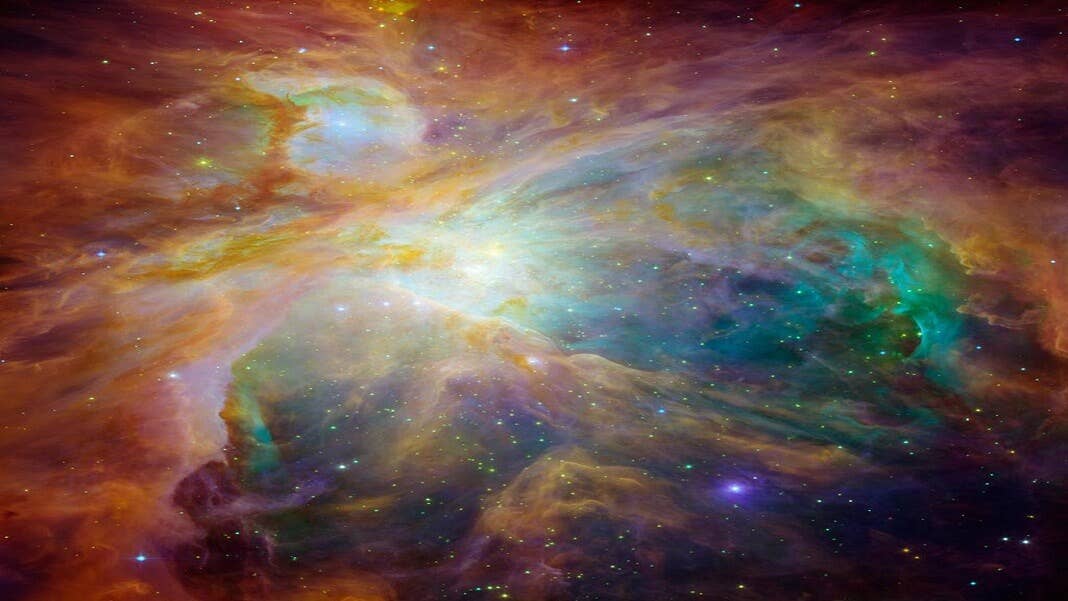Hydrogen-Breathing Aliens? Study Suggests New Approach to Finding Extraterrestrial Life

Share
The first time we find evidence of life on a planet orbiting another star (an exoplanet), it is probably going to be by analyzing the gases in its atmosphere. With the number of known Earth-like planets growing, we could soon discover gases in an exoplanet’s atmosphere that are associated with life on Earth.
But what if alien life uses somewhat different chemistry to ours? A new study, published in Nature Astronomy, argues that our best chances of using atmospheres to find evidence of life is to broaden our search from focusing on planets like our own to include those with a hydrogen atmosphere.
We can probe the atmosphere of an exoplanet when it passes in front of its star. When such a transit happens, the star’s light has to pass through the planet’s atmosphere to reach us and some of it is absorbed as it goes. Looking at the star’s spectrum—its light broken down according to its wavelength—and working out what light is missing because of the transit reveals which gases the atmosphere consists of. Documenting exoplanet atmospheres is one of the goals of the much-delayed James Webb Space Telescope.
If we were to find an atmosphere that has a different chemical mix to what we would expect, one of the simplest explanations would be that it is maintained that way by living processes. That is the case on Earth. Our planet’s atmosphere contains methane (CH₄), which naturally reacts with oxygen to make carbon dioxide. But the methane is kept topped up by biological processes.
Another way to look at this is that the oxygen wouldn’t be there at all had it not been liberated from carbon dioxide by photosynthetic microbes during the so-called great oxygenation event that began about 2.4 billion years ago.
Look Beyond Oxygen Atmospheres
The authors of the new study argue that we should start investigating worlds larger than the Earth whose atmospheres are dominated by hydrogen. These may not have any free oxygen, because hydrogen and oxygen make a highly flammable mixture.
Hydrogen is the lightest of all molecules and escapes to space easily. For a rocky planet to have gravity strong enough to hang on to a hydrogen atmosphere, it needs to be a “super-Earth” with a mass between about two and ten times the Earth’s. The hydrogen could either have been captured directly from the gas cloud where the planet grew, or have been released later by a chemical reaction between iron and water.
The density of a hydrogen-dominated atmosphere decreases about 14 times less rapidly the higher up you go than in an atmosphere dominated by nitrogen like the Earth’s. This makes for a 14-times greater envelope of atmosphere surrounding the planet, making it easy to spot in the spectra data. The greater dimensions would also improve our chances of observing such an atmosphere by direct imaging with an optical telescope.
Hydrogen-Breathing in the Lab
The authors carried out laboratory experiments in which they demonstrated that the bacterium E. coli (billions of which live in your intestines) can survive and multiply under a hydrogen atmosphere in the total absence of any oxygen. They demonstrated the same for a variety of yeast.
Although this is interesting, it does not add much weight to the argument that life could flourish under a hydrogen atmosphere. We already know of many microbes within the Earth’s crust that survive by metabolizing hydrogen, and there is even a multicellular organism that spends all its life in an oxygen-free zone on the floor of the Mediterranean.
Be Part of the Future
Sign up to receive top stories about groundbreaking technologies and visionary thinkers from SingularityHub.


Earth’s atmosphere, which started out without oxygen, is unlikely ever to have had more than one percent hydrogen. But early life may have had to metabolize by reacting hydrogen with carbon to form methane, rather than by reacting oxygen with carbon to form carbon dioxide, as humans do.
Biosignature Gases
The study did make an important discovery though. The researchers demonstrated that there is an “astonishing diversity” of dozens of gases produced by products in E. coli living under hydrogen. Many of these, such as dimethylsilfide, carbonyl sulfide, and isoprene, could be detectable “biosignatures” in a hydrogen atmosphere. This boosts our chances of recognizing life signs at an exoplanet; you have to know what to look for.
That said, metabolic processes that use hydrogen are less efficient than those using oxygen. However, hydrogen breathing life is already an established concept so far as astrobiologists are concerned. Sentient hydrogen breathers have even made appearances in some rationally-based science fiction, such as the Uplift novels of David Brin.
The authors of the new study also point out that molecular hydrogen in sufficient concentration can act as a greenhouse gas. This could keep a planet’s surface warm enough for liquid water, and hence surface life, further from its star than would otherwise be the case.
The authors shy away from considering the chances of finding life in giant gas planets like Jupiter. Even so, by expanding the pool of habitable worlds to include super-Earths with hydrogen-rich atmospheres, they have potentially doubled the number of bodies we could probe to find those first elusive signs of extraterrestrial life.![]()
This article is republished from The Conversation under a Creative Commons license. Read the original article.
Image Credit: NASA Jet Propulsion Laboratory
I became Professor of Planetary Geosciences at the Open University in November 2013, having been a Senior Lecturer in Earth Sciences since 1994. Before that I was a Lecturer here. I am now in the Department of Physical Sciences, but until 2011 was in the former Department of Earth Sciences. During 1999-2004 I was Director of Teaching and Geosciences Programme Director. I have also been Leader of the IAVCEI Commission on Remote Sensing, and in 2005 I was appointed to the PPARC Solar System Advisory Panel and the BepiColombo Oversight Committee. In May 2006 I was appointed UK Lead Scientist (now lead Co-Investigator) on MIXS (Mercury Imaging X-ray Spectrometer), which is the only UK Principal Investigator instrument on BepiColombo, the European Space Agency mission to Mercury to be launched in 2017. I chair ESA's Mercury Surface and Composition Working Group. I was also a member of the Science Advisory Panel for C1XS, the X-ray spectrometer on Chandrayaan-1 (launched 22 Oct 2008). In 2006-7 I served on the ESSC/ESF Ad Hoc Group on Definition of a science-driven European scenario for space exploration. My research interests centre on the study of volcanic activity by means of remote sensing, and volcanology and geoscience in general on other planets. My landmark book 'Planet Mercury: From Pale Pink Dot to Dynamic World' was published by Springer-Praxis on 14 Dec 2014. I also wrote 'Volcanoes, Earthquakes and Tsunami, A complete introduction' (new edition 2015) and 'Geology, A complete introduction' (new edition 2015) for Hodder's 'Teach Yourself' series, and 'A Very Short Introduction to Planets', Oxford University Press (2010). A companion volume 'A Very Short Introduction to Moons' was published in November 2015.
Related Articles

Data Centers in Space: Will 2027 Really Be the Year AI Goes to Orbit?

Scientists Say We Need a Circular Space Economy to Avoid Trashing Orbit

New Images Reveal the Milky Way’s Stunning Galactic Plane in More Detail Than Ever Before
What we’re reading
